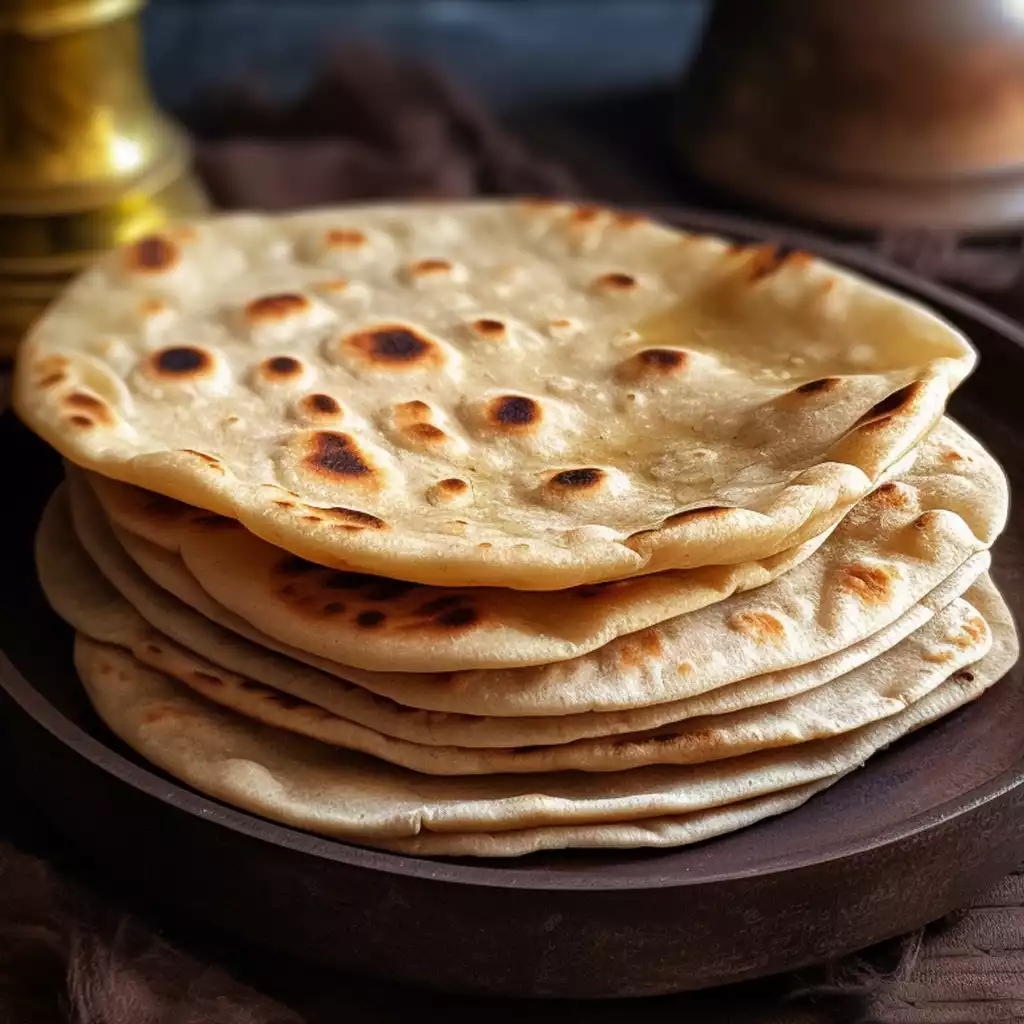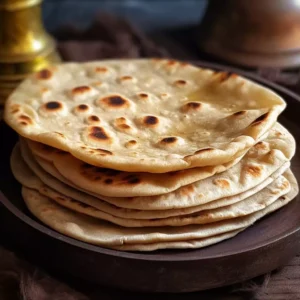
Chapati, a simple yet essential staple in Indian cuisine, holds a special place in the hearts and homes of many. This age-old recipe has been passed down through generations, creating a bond that transcends time.
Originating in the Indian subcontinent, chapati is a versatile flatbread that pairs perfectly with a wide array of dishes. Its history dates back centuries, showcasing the rich cultural heritage of the region.
The beauty of chapati lies in its simplicity and adaptability. Made from just a few basic ingredients — flour, water, salt, and sometimes oil — this unleavened bread is a breeze to whip up.
The dough is rolled out into thin rounds, then cooked on a hot griddle until puffy and golden brown. The result? A soft, chewy bread that’s perfect for scooping up curries, dals, and chutneys.
While chapati may seem straightforward, perfecting the art of making this bread takes practice. Getting the right consistency of dough, mastering the technique of rolling out the rounds, and achieving the ideal level of puffiness during cooking all require a deft touch.
But fear not — with a little patience and perseverance, you’ll soon be on your way to mastering the art of making chapati.
Expert Tip: Ensure the water you use for kneading the dough is warm, but not too hot. Hot water can make the dough sticky and difficult to work with.
Wholemeal Flour: Wholemeal flour is a type of flour that is made by grinding the entire wheat kernel, including the bran, endosperm, and germ. This results in a flour that is higher in fiber and nutrients compared to white flour. It has a slightly nutty flavor and a denser texture, making it a popular choice for bread and chapati recipes.
Salt: Salt is a mineral that is commonly used in cooking to enhance the flavor of dishes. It also plays a role in controlling the fermentation process in bread recipes. In this chapati recipe, salt is added to the dough to provide a savory taste to the final product.
Oil: Oil is a cooking fat that is used to add moisture and richness to recipes. In this chapati recipe, oil is added to the dough to improve the texture of the chapatis and make them more pliable. It also helps in preventing the chapatis from drying out during cooking.
Expert Tip: When rolling out the chapatis, try to maintain an even thickness throughout. This helps in even cooking and ensures that the chapatis puff up nicely.
Looking for some serving suggestions and variations for your freshly made Chapati recipe? Here are some ideas to help you get creative:
Expert Tip: Keep the cooked chapatis warm by wrapping them in a clean tea towel or placing them in a covered container. This helps retain their softness and prevents them from drying out.
Yes, you can freeze chapatis for later use. Make sure to wrap them in foil or plastic wrap before placing them in the freezer.
Chapatis can stay fresh for up to 2-3 days if stored in an airtight container at room temperature.
Yes, you can reheat chapatis by placing them in a preheated skillet or in the microwave for a few seconds.
The best way to store leftover chapatis is by placing them in an airtight container or wrapping them in foil to keep them fresh.
Yes, you can make chapatis without using oil in the dough. However, a small amount of oil may be used while cooking the chapatis on a skillet to prevent sticking.
Here are some more recipes for you to enjoy! If you my recipes don’t forget to rate and leave a comment.
If you have any recipe suggestions, please do not hesitate to ask me. A great way to stay in contact with me is through Instagram, Facebook, Twitter and YouTube. Don’t forget to tag me @CookwithNabeela in your recipe photos!

Subscribe now to receive my latest recipes directly in your inbox. Stay up-to-date and never miss out!

I love to cook! I want to share with you my favourite, delicious family-friendly recipes. I want to inspire you to create fantastic food for your family every day.
Add your first comment to this post